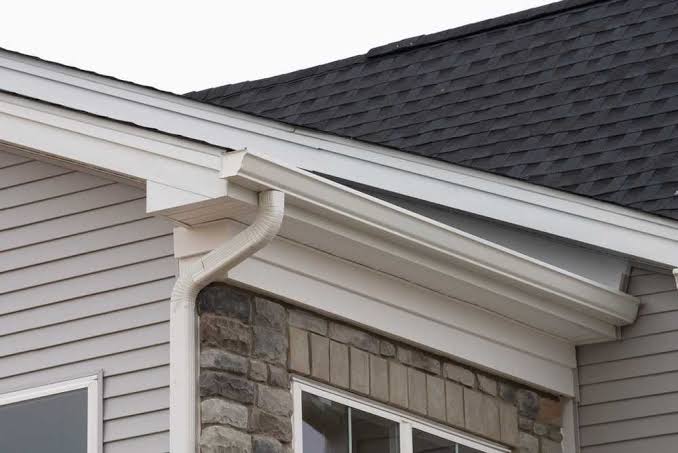When people think about protecting their homes from water damage, they often focus on roofs, foundations, or landscaping. Yet, one of the most crucial components in defending a building from long-term structural harm is often overlooked: the gutter system.
While small in appearance, gutter systems play an outsized role in the overall health, efficiency, and longevity of any structure. From managing rainwater runoff to preventing foundation damage, gutters are essential yet underappreciated.
In this article, we’ll dive deep into the function, types, materials, maintenance, and modern innovations in gutter technology—unpacking everything you need to know to make informed decisions about this key part of your home’s exterior.
- What Is a Gutter System?
A gutter system is a collection of channels and downspouts designed to capture rainwater from the roof and redirect it away from the building’s foundation. The system usually consists of:
- Horizontal gutters mounted along the edge of the roofline
- Downspouts that carry water vertically down and away from the foundation
- Elbows and extensions to further direct water
- Gutter guards or screens to block debris
Without a proper gutter setup, water flows directly off the roof’s edge, pooling around the foundation, causing erosion, basement flooding, siding damage, and mold.
2. Why Gutter Systems Matter
The purpose of gutters goes far beyond just avoiding puddles around your home. Their benefits include:
- Foundation protection: Redirecting water prevents pressure buildup and cracks in the foundation.
- Basement waterproofing: Reduces the risk of leaks or flooding in lower levels.
- Erosion control: Prevents the landscape from washing away during heavy rainfall.
- Siding and paint preservation: Stops water from dripping down the side of the home.
- Mold prevention: Keeps moisture away from critical components of your house.
- Roof longevity: Prevents water backflow that can seep under shingles and cause rot.
Simply put, gutter systems are not just accessories—they’re essential tools in safeguarding your property.
3. Types of Gutter Systems
There are various types of gutters, each with unique features, advantages, and ideal use cases. Choosing the right one depends on your climate, budget, and aesthetic preferences.
a. K-Style Gutters
- Most common residential type
- Shaped like crown molding
- Holds more water than half-round style
- Ideal for modern homes
b. Half-Round Gutters
- Rounded shape, popular on older or historic homes
- Easier to clean due to fewer sharp angles
- Typically made of copper or aluminum
c. Box Gutters
- Built into the roof structure (not hung externally)
- Common in commercial and industrial buildings
- High capacity, but require more maintenance
d. Seamless Gutters
- Custom-formed on-site to the length of the roof
- Fewer joints, reducing leak risk
- Typically aluminum
- Long-term cost-effective due to reduced maintenance
4. Materials Used in Gutters
Gutters can be constructed from various materials, each with pros and cons.
a. Aluminum
- Lightweight, rust-resistant, and affordable
- Popular for residential installations
- Available in many colors
- Vinyl
- Budget-friendly and easy to install
- Prone to cracking in cold climates
c. Steel
- Strong and durable
- Can rust over time without protective coating
d. Copper
- Elegant appearance, often used in luxury or historical homes
- Extremely durable and corrosion-resistant
- Most expensive option
e. Zinc
- Long lifespan with a natural weather-resistant finish
- Rare but growing in popularity for high-end homes
- Signs Your Gutters Need Attention
Homeowners often forget about gutters until something goes wrong. Watch for these signs:
- Water spilling over during rain
- Sagging or pulling away from the house
- Visible rust or holes
- Water stains on siding
- Pooling water near the foundation
- Plants or moss growing inside the gutter
These issues can indicate blockages, poor installation, or age-related failure—and all are fixable with timely attention.
6. Gutter Maintenance: Protecting the Protector
Regular maintenance extends the life of your gutter system and keeps it functioning at peak performance.
a. Cleaning
- Remove leaves, twigs, and debris at least twice per year
- Use gloves, a garden hose, or gutter scoops
b. Flushing
- Run water through the system to check for proper flow
- Identify and fix clogs or slow drainage
c. Sealing Leaks
- Use waterproof gutter sealant on joints and corners
- Replace damaged sections promptly
d. Gutter Guards
- Install mesh screens or covers to prevent debris buildup
- Reduces the frequency of manual cleaning
A clean, well-maintained gutter system not only protects your property but also boosts its resale value.
7. Innovations in Modern Gutter Technology
Today’s homeowners demand more convenience, durability, and efficiency. As a result, gutter systems are evolving rapidly.
a. Seamless Gutters
- Fewer joints = fewer leaks
- Custom-fit for your roof
Longer-lasting with minimal upkeep
b. Heated Gutter Systems
- Built-in heat cables prevent ice dams in cold climates
- Keep water flowing freely, even in winter
c. Smart Sensors
- Detect blockages or overflow in real time
- Integrate with home automation systems
- Provide maintenance alerts
d. Rainwater Harvesting
- Collect runoff in barrels or underground tanks
- Use for irrigation, toilets, or gray water systems
- Eco-friendly and cost-saving
These innovations are transforming gutters from passive structures into intelligent systems that actively support home health and sustainability.
8. Professional vs. DIY Installation
While DIY gutter installation may seem like a cost-effective option, there are key reasons to consider hiring professionals:
Benefits of professional installation:
- Accurate pitch and alignment
- Secure fastening to avoid sagging
- Correct sizing for optimal flow
- Warranty coverage
- Proper sealing to prevent leaks
Poor installation can lead to more damage than having no gutter at all. Investing in a trained installer ensures your gutter system in Westchester County, NY performs effectively for years to come.
- Gutter Sizing and Water Flow
A critical but often ignored aspect is proper sizing. Gutters must handle the water volume your roof collects during heavy rains.
Factors that affect sizing:
- Roof pitch and square footage
- Local rainfall intensity
- Number and placement of downspouts
Oversized systems can be costly, but undersized ones will overflow and cause damage. Professionals calculate and recommend the appropriate size using specialized tools and formulas.
- Design Considerations and Aesthetics
Functionality is key, but that doesn’t mean gutters have to be ugly.
- Match gutter color with trim or siding
- Use decorative brackets or rain chains for style
- Choose material finishes that complement your home’s architecture
- Concealed systems can hide gutters completely from view
Gutters can seamlessly blend with your home or become a subtle design feature—all while performing their protective role.
Final Thoughts
Gutters may not be glamorous, but they are vital. These simple channels control one of the most destructive forces to a home: water. Without them, your foundation, landscaping, walls, and interior spaces are all at risk.
Investing in high-quality gutter systems, keeping them well-maintained, and choosing the right professionals for the job can save you thousands in future repairs—not to mention preserving the beauty and structural integrity of your home.
So the next time it rains, don’t just watch the water run off your roof. Pay attention to where it goes. Your gutter system is quietly doing one of the most important jobs on your property—and doing it well means everything.






